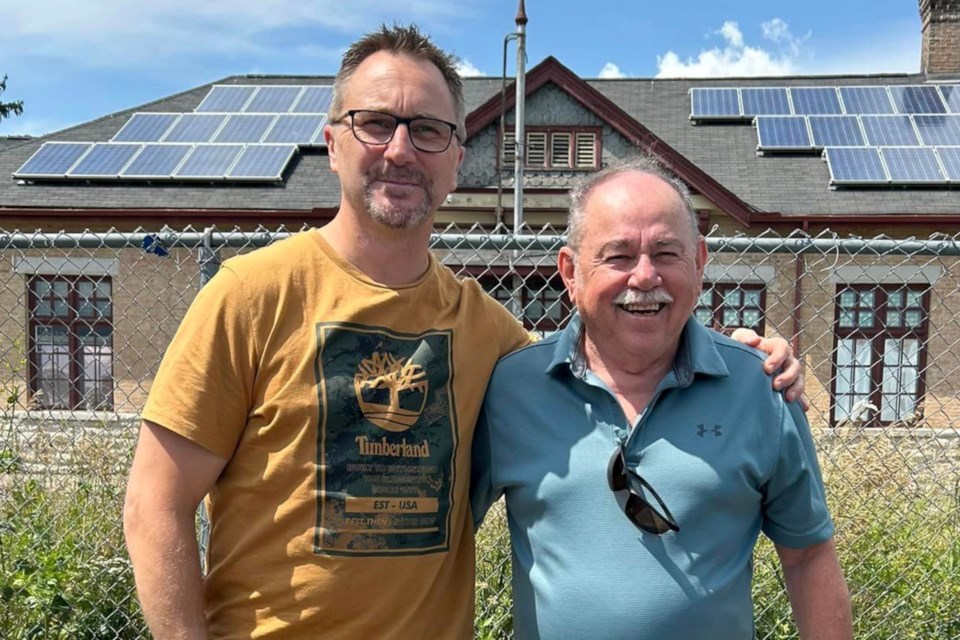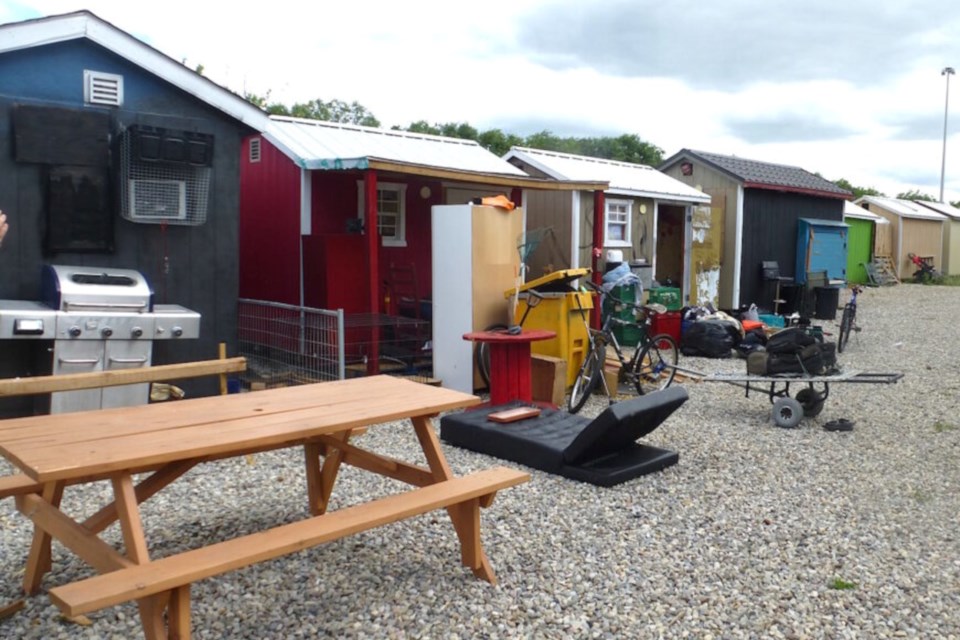In tackling homelessness in Greater Sudbury, the topic of using tiny homes has come up as an option a number of times, but hasn’t resulted in city council action.
Ward 5 Coun. Mike Parent visited Peterborough last weekend to learn more about the community’s 50-unit tiny home project.
Having been asked about this option a number of times in recent months while rolling out the city’s plan to bring a functional end to homelessness by 2030, he said, “We’ve heard mixed things, so I thought I needed to go there myself.”
“It’s not a perfect solution, but from what was shared with us, the 50 who are living inside the complex, it’s been a success story.”
Parent met with City of Peterborough Coun. Keith Riel, who serves as chair of the city’s homelessness portfolio.

“We’re writing our own book on this, and it’s something that can be replicated across Canada,” Riel told Sudbury.com this week. “I’m not saying it’s the best solution, but we needed to get people out of tents.”
The tiny home community has come with its merits and pitfalls, Riel said, noting that Peterborough still has a problem with people tenting, but that the tiny homes have made a dent.
“They’ve been living rough for a number of years, so they need to learn life skills,” he said, describing the tiny home community as transitional housing. “Just putting them in an apartment without learning any life skills is a disaster waiting to happen.”
Residents are provided with one meal per day alongside other wraparound services within a shared building that includes examination rooms where local doctors donate time to provide medical care. Security guards patrol the grounds, security cameras have been installed and the area has been fenced off.
Each unit includes a refrigerator, bed and some shelving — enough to comfortably live without needing to brave the elements as residents would otherwise have to if living in a tent.
The community was approved by Peterborough city council on May 23, 2023, with construction beginning that September. Forty-nine of the 50 units were occupied as soon as they opened in November. Its construction cost approximately $2.5 million, and its net annual operating budget (less rental revenue) is just shy of $2 million.
For a full rundown of the City of Peterborough’s reports and frequently asked questions regarding the program, click here.
Greater Sudbury city council last voted on whether to proceed with a similar such project in November 2021, when a motion to build “an alternate encampment location at the Energy Court Site, as a temporary measure, as soon as possible, to include ice fishing hut tents, clean drinking water, access to hygiene/sanitation facilities and waste management,” was rejected.
At the time, homelessness consultant Iain De Jong advised against the idea, noting that encampments would continue to exist, as Peterborough is now experiencing.
“It’s a unique idea relative to consideration in a local context,” he said, adding that his organization does not believe in “managing or perpetuating homelessness,” and that the city should be looking at “everything from ... retail spaces to warehouses as alternate forms of shelters rather than going down the road of a sanctioned encampment.”
The Greater Sudbury Encampment Response Guide compiled by De Jong’s firm OrgCode Consulting Inc. notes, “Municipally funded portable rent supplements would help people exit homelessness and cost significantly less than operating the safe camping zone.”
Parent said he has reviewed the report and doesn’t disagree with De Jong’s assessment, but that much has changed since 2021.
“I’m concerned that we’re going to have more (homelessness) this year than we had last year, and we struggled last year to be able to accommodate the number of people experiencing homelessness during the winter months,” he said.
“We’re also seeing an increase in our population, so is that increase in population eating up what we’re adding to housing?”
There’s already not enough housing to accommodate everyone who needs it, and a system in which affordable housing stock falls well short of demand.
With affordable housing developments such as Project Manitou still years away from opening, and people needing housing now, Parent said that tiny homes, which can become available quickly, might serve as a stop-gap measure until more housing units are built.
Meanwhile, the city’s 40-unit transitional housing complex on Lorraine Street is expected to open soon, and is geared toward housing the chronically homeless along with the support they need to find success to maintain permanent community housing.
The city’s latest by-name list, issued on June 27, counts 279 people as being actively homeless. Of these, 76 were staying in encampments, 78 were unsheltered, 54 were in shelters and 71 were provisionally accommodated or “unknown.” The city has clarified in the past that the by-name list is not exhaustive, as it only includes unhoused people who choose to participate with the city.
In May, city council unanimously backed a $350-million plan to end homelessness by 2030, which would be covered by all three levels of government. This plan is anticipated to begin rolling out later this year through business cases put forward to city council as part of budget 2025 deliberations, for which Parent has thrown the tiny house idea into the mix.
Tyler Clarke covers city hall and political affairs for Sudbury.com.




